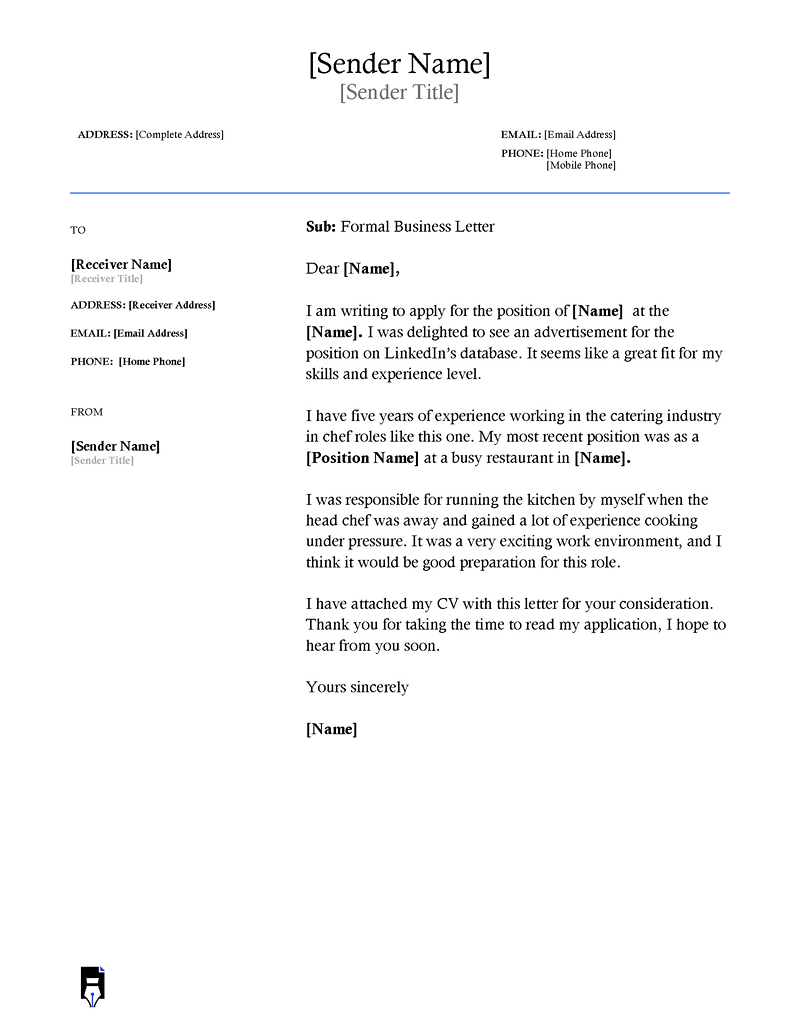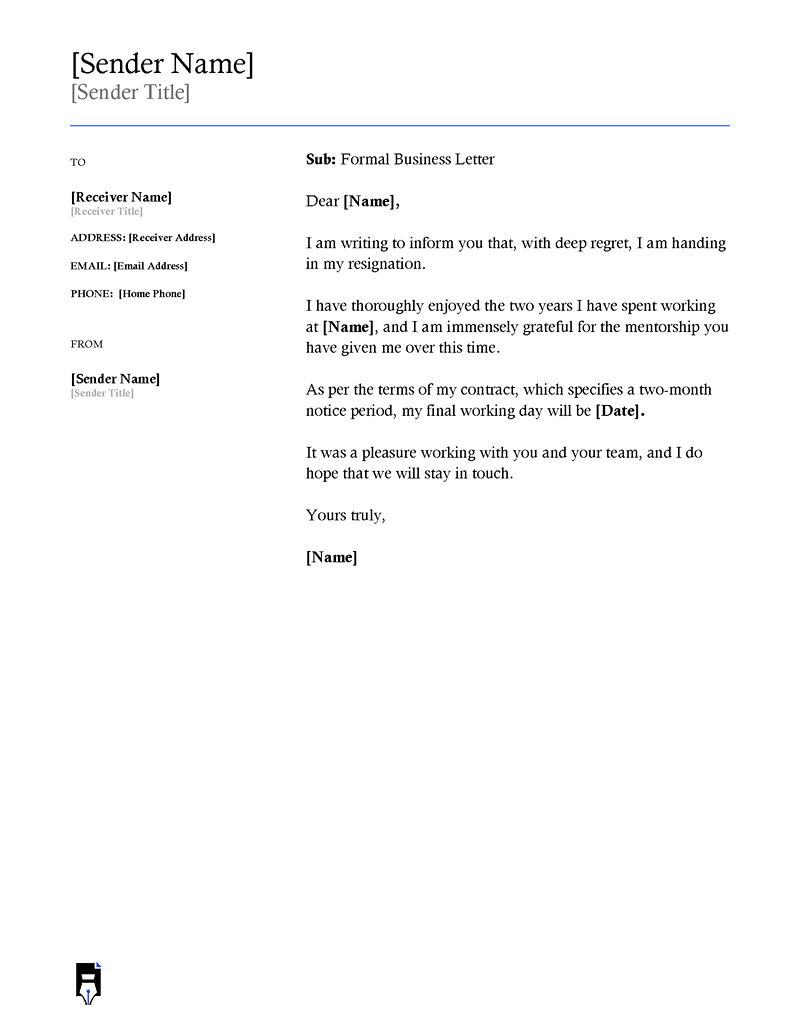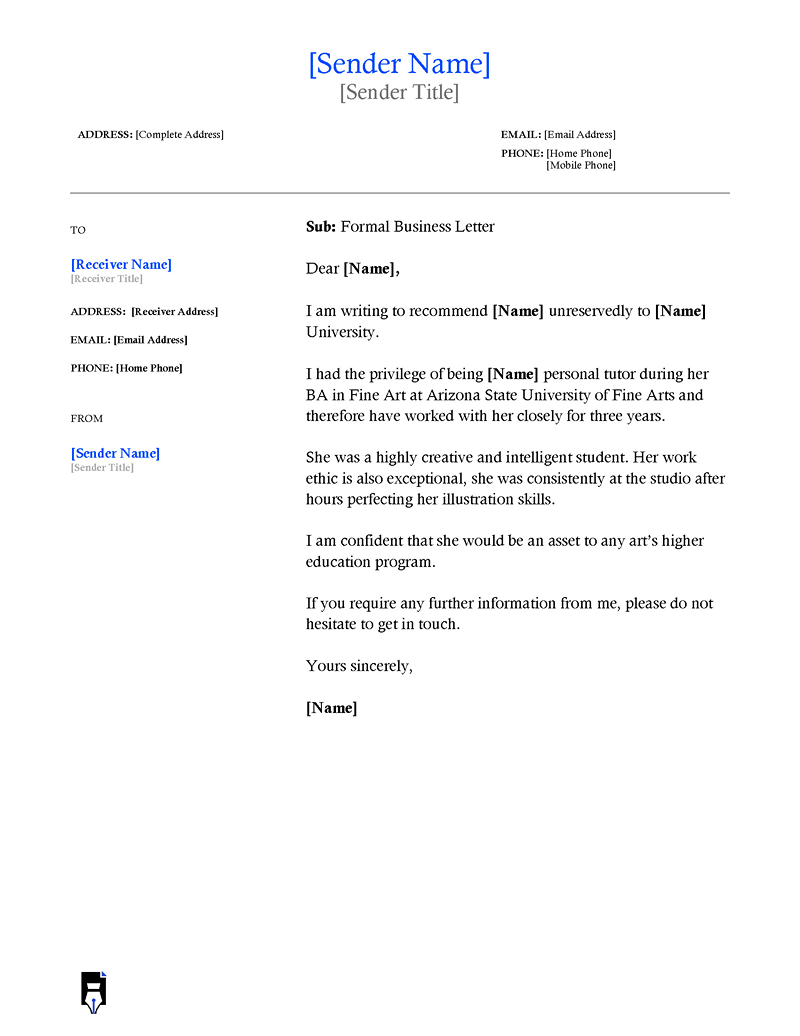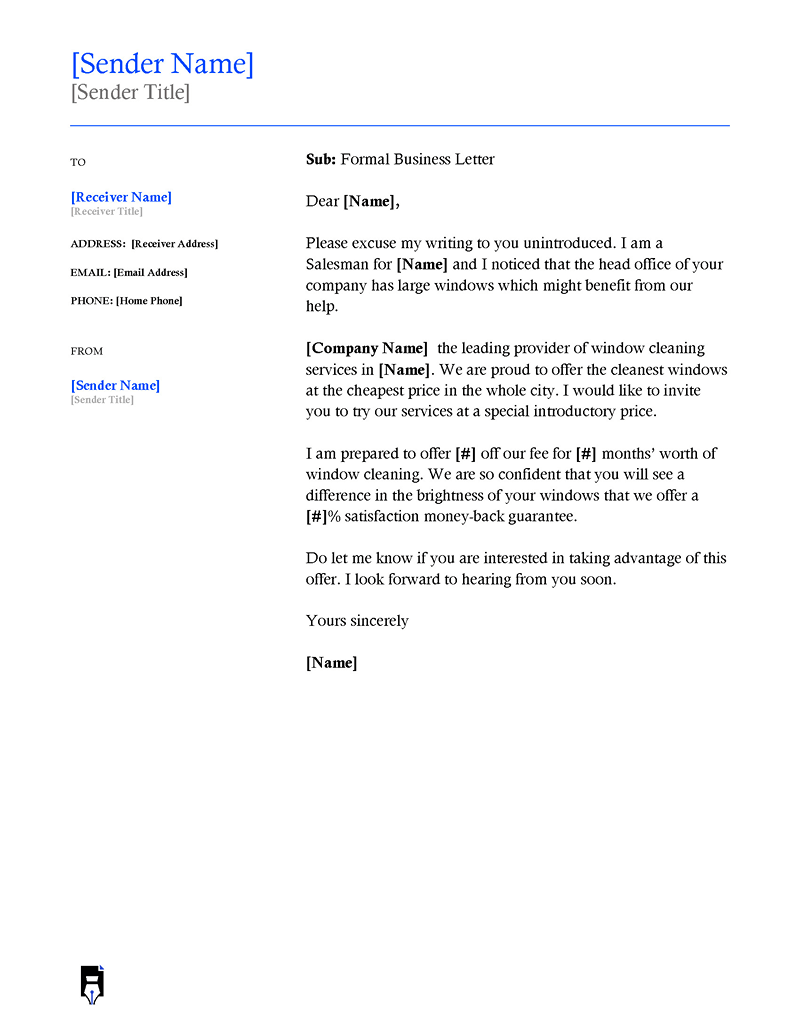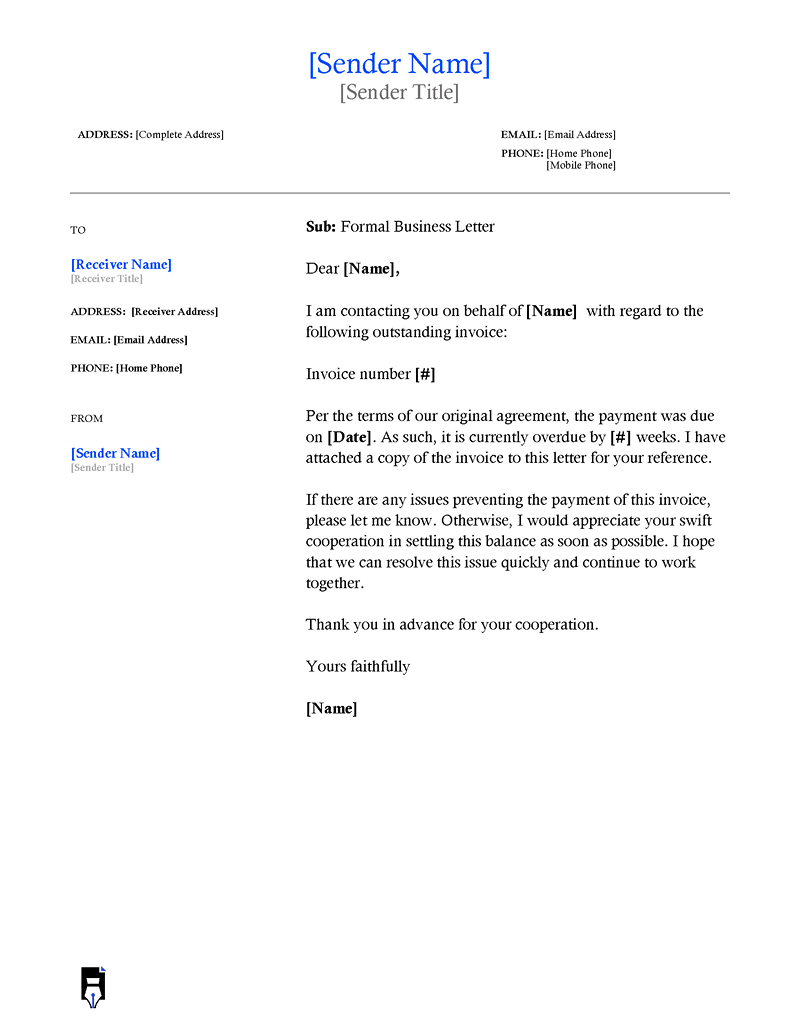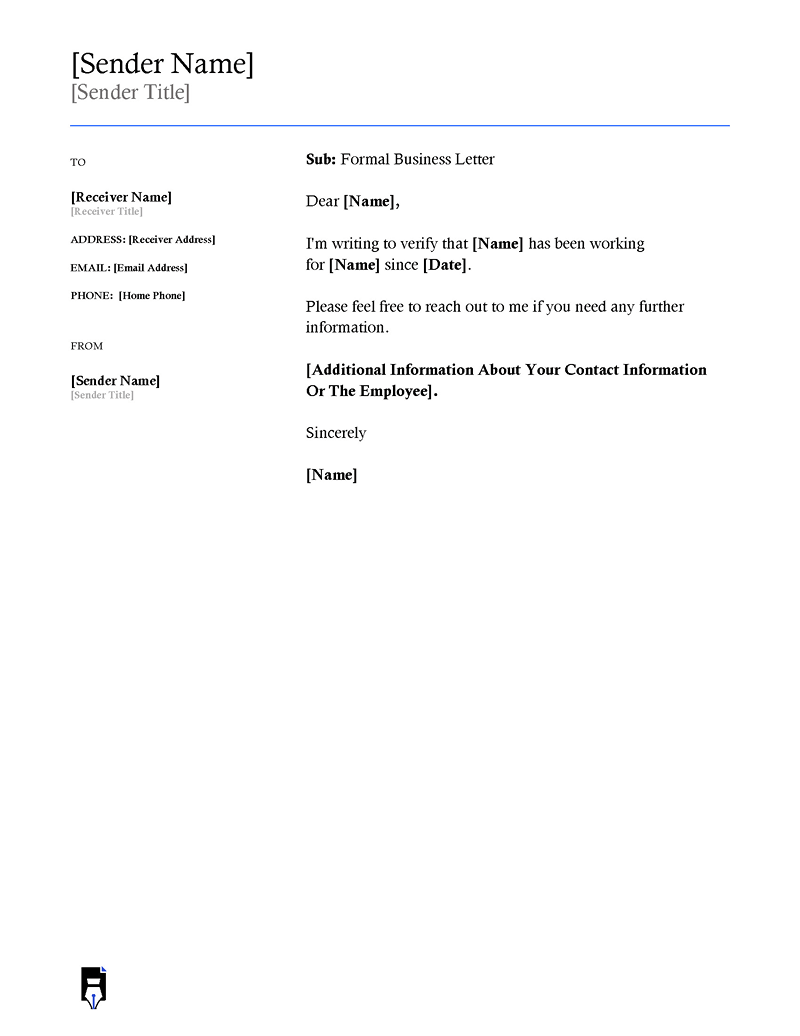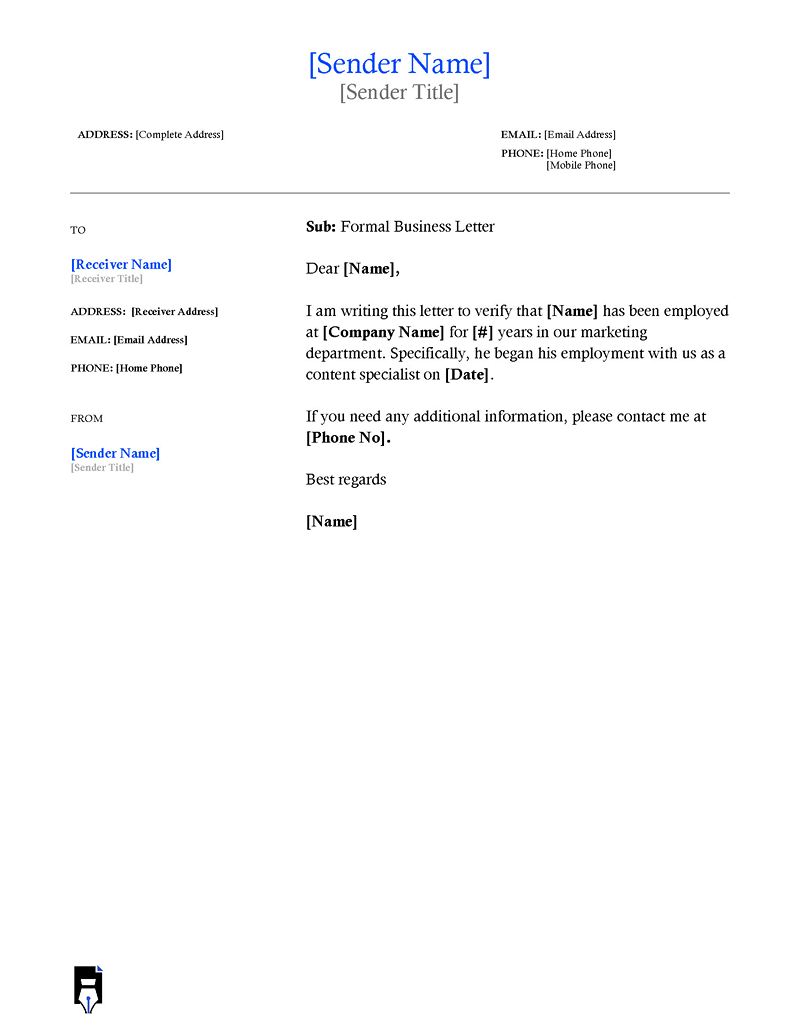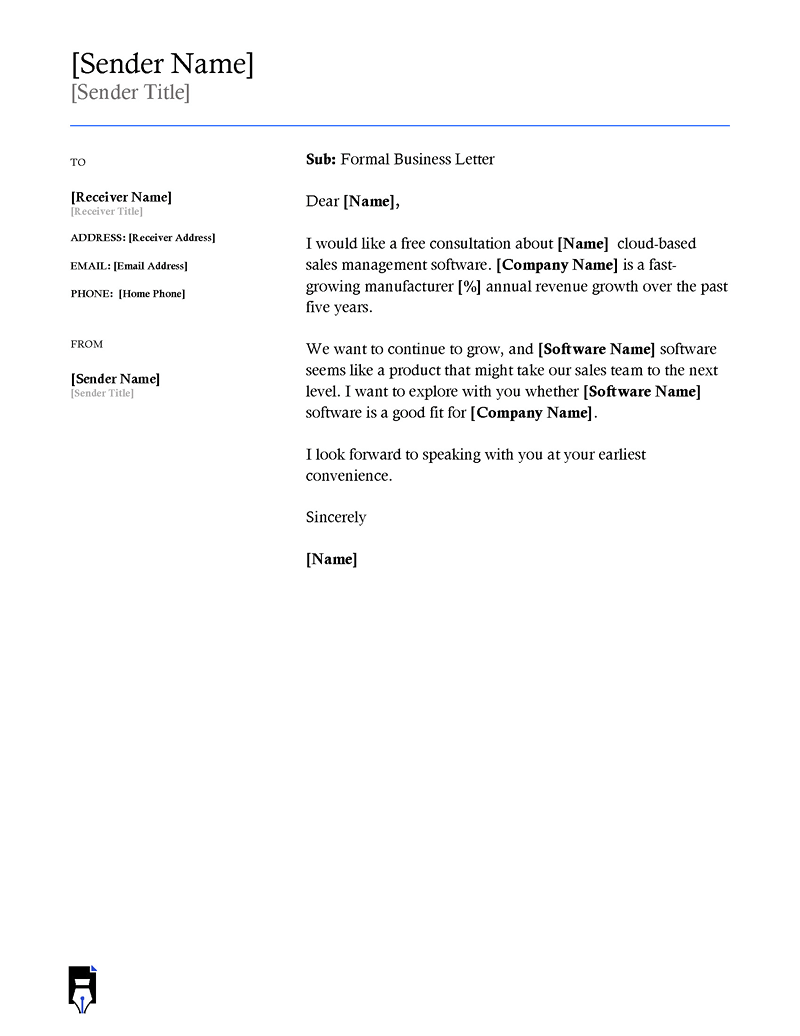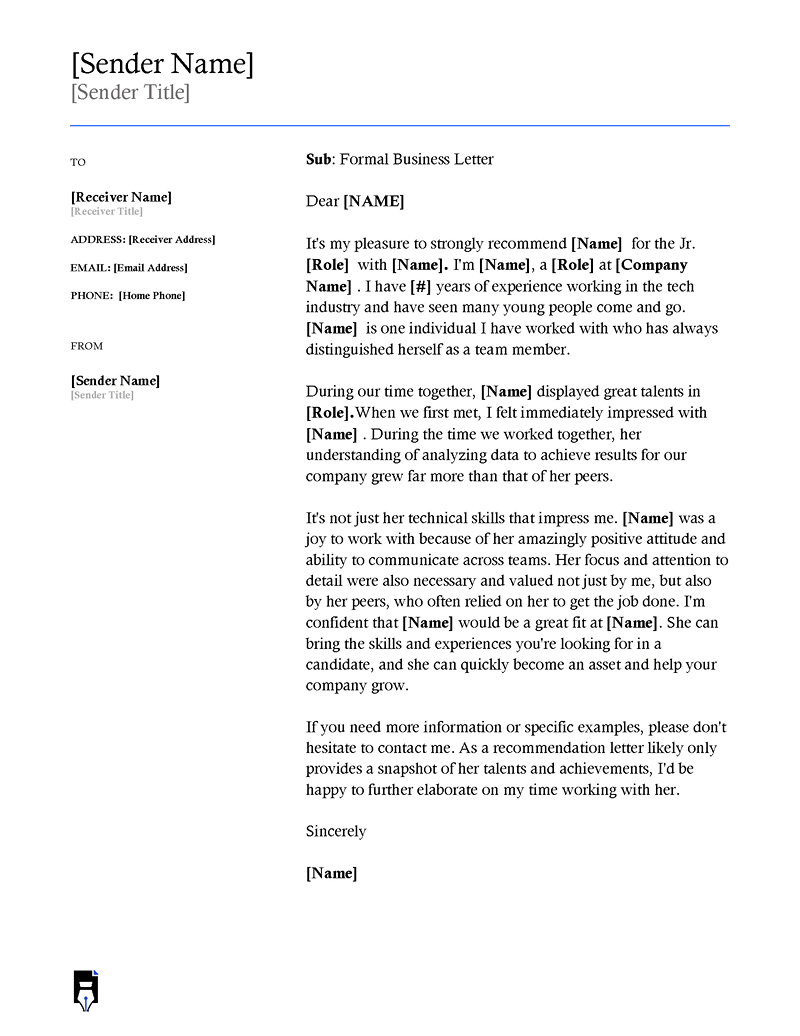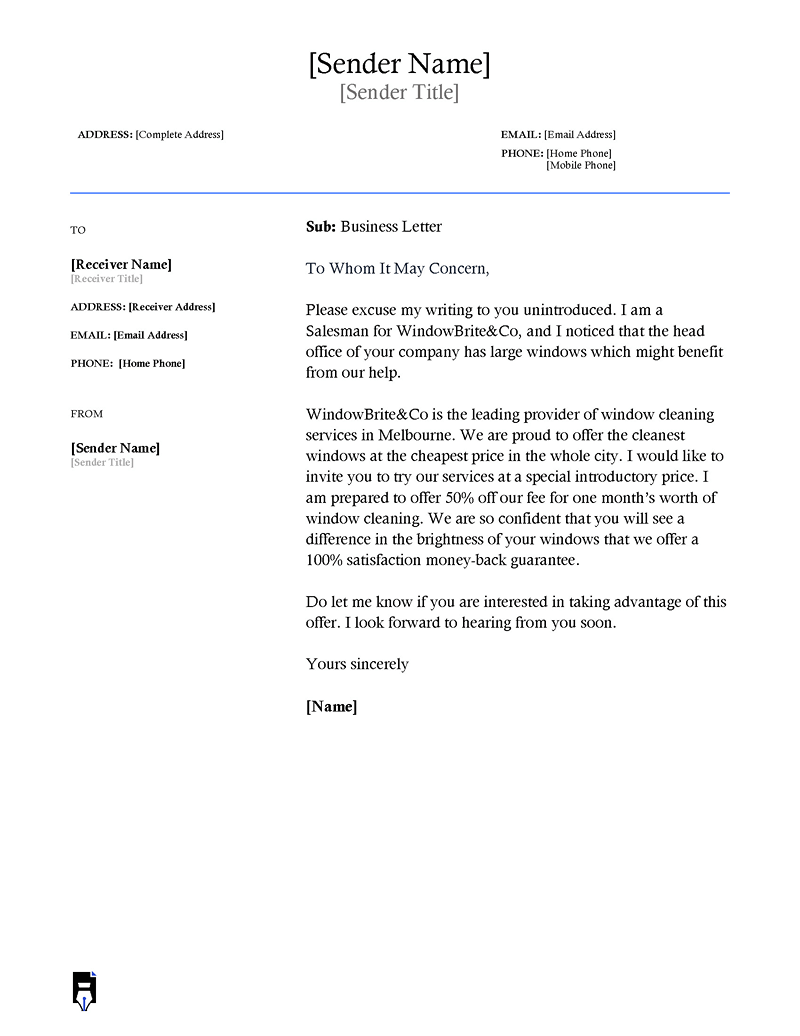Businesses and individuals communicate regularly through letters for various purposes. These letters facilitate clear communication between two parties. Though email is becoming more acceptable for official correspondence, one is still more likely to solicit a response with a letter than an email. Letters are still the main means of correspondence between businesses. Business letters are often sent from one organization to another. They can, however, also be sent to an individual, vendor, or client.
The guidelines outlined in this article will help you draft a professional letter that will effectively communicate your message. The article will:
- Describe the situations in which official letters are used.
- Guide you on how to format a letter for official communication.
- Describe different formats and examples.
- Discuss the important factors you should consider when writing an official letter.
Free Templates
Following are the formal business letter templates:
When Should You Use a Formal Letter
Business letters are essential for communicating with a wide range of people in the business world. A well-written letter can be distinguishable if the sender needs to convey information, request some action, or make an introduction to a potential customer.
Some purposes of such letters include the following:
Cover letters
A cover letter is a one-page document that candidates submit along with their resumes. It gives an overview of the candidate’s achievements and suitability for the job. It is a crucial document to showcase your qualifications for the position you are applying for, whether you are a recent graduate or a seasoned professional.
For recommending a former employee or colleague
One might be required to provide references from previous colleagues, supervisors, or clients to confirm their skills, experience, and work ethic when seeking new employment. A reference letter provides credible professional insights about the individual.
Confirming an individual’s employment history and job duties
Lenders, landlords, and organizations use employment verification letters as part of a verification process. These letters are used to seek accurate and up-to-date information about an individual’s employment status, job title, salary, and period of employment.
For making an offer of employment
A company sends an official letter to offer a position to someone in their company. The letter contains details about the job, compensation and benefits, and other terms and conditions of employment. It may also specify the start date and any applicable probationary period.
Communicating an applicant’s acceptance to a school, college, or university
When a student is accepted as a student at an educational institution, they receive a letter from the institution confirming their enrollment. These letters are a confirmation of a student’s admission and also provide additional information about the study program. It usually contains information about the reporting date and the enrollment requirements such as fee payments and an orientation day etc.
Letters of resignation
Your employer needs to be formally notified if you will be leaving your position. Whether you work at a small company or a large corporation, you must submit a letter of resignation before leaving.
Complaint letters
Consumers typically send complaint letters to businesses when they are dissatisfied with a service or product. You can report a bad experience or poor customer service, or notify the company that their products are unsatisfactory.
How to Format a Formal Business Letter
An appropriately formatted letter is expected when communicating with a professional organization. A poorly structured letter gives the recipient the perception that the sender lacks not only communication skills but is also unprofessional. Because of this, your letter needs to be presented professionally.
Follow these steps to draft a polished and well-structured formal letter that is effective in conveying your message:
A professional header
Write your name, address, contact information, and designation at the top left corner of the page. You do not want the addressee to search for your address before responding. After this, include the date you are writing the letter. Use the day, month, and year layout, e.g., January 3, 2023. Then, include the recipient’s name, address, and contact information so that they know the letter is addressed to them.
For example:
Desi Gayle
1156 Oakbrook Dr.
Montgomery, Alabama (AL), 36110
(334) 649-1813
[email protected]
5 February 2023
Robin Parker
Chief Financial Officer
Pembroke Investments
27547 Maple Way Ridge SE
Maple Valley, Washington (WA), 98038
(425) 413-5352
[email protected]
A clear subject line
After the addresses, write a subject line that is informative and conveys the purpose of the correspondence clearly and concisely. Write the subject line in the center of the page, either in bold or underlined.
The following is an example of a subject line:
Subject: Request for Quote for Office Supplies
Respectful salutation
Include a courteous and respectful salutation followed by the name of the recipient. The following salutations are acceptable:
- “Dear Sir,” “Dear Madam,” or “To Whom It May Concern” if you do not know the recipient.
- “Dear,” “Mr.” “Ms.” or “Mrs.” followed by the recipient’s last name if you know the recipient formally.
- “Dear” followed by their first name if you know the recipient informally.
Body of the Letter
The body should contain the following key sections:
- Introduction: In the first paragraph, introduce the main topic. The introduction should be clear, concise, and informative to provide enough context for the letter’s purpose.
- Arguments/facts/reasons: The body of the letter is the main section containing the main message. Provide a detailed reason for the correspondence. Divide the text into paragraphs to present the thoughts in an organized way. Include any information or details that are necessary to support your main message or purpose.
- Closing: In the final paragraph, summarize the main points and express any last thoughts. The final paragraph should be brief and leave the recipient with a positive impression.
For example:
I hope this letter finds you well. I am writing to inquire about the possibility of collaborating on an architectural project. I have long admired your company’s commitment to building quality homes.
I would like to learn more about your pricing plans and would greatly appreciate it if you could provide me with the relevant information. Additionally, I would like to schedule a meeting with you or a member of your team to discuss potential partnership opportunities.
I look forward to hearing from you soon and thank you in advance for your time and consideration.
Closing salutation
End the letter by providing a closing salutation that best reflects the nature of the message and your relationship with the sender. Some common closing salutations for formal letters include “Sincerely,” “Best regards,” “Thank you,” or “Yours faithfully.” If the letter is more casual or informal, you may choose to use a less formal closing salutation, such as “Best,” “Thanks,” or “Take care.”
Signatures
Place your signature at the end of the letter. Make sure you use either blue or black ink for the signatures. Your signature personalizes the document and also verifies that it was actually written by you.
Additional information
Mention if the letter has any attachments. It is customary to mention any additional documents that accompany the letter. In this way, the recipient will not miss the documents, and they will also be used for record keeping.
For example:
Enclosed are copies of the following:
-Resume
-References
-Copy of Diploma
4 Types of Business Letter Formats
The format you choose for your letter should be appropriate for its purpose. It should reflect the nature of the relationship between you and the recipient.
The following standard formats are most commonly used for business communication:
Full block format
[Your Name]
[Your Physical Address]
[Your Email Address]
[Your Phone Number]
[Date]
[Recipient Name]
[Recipient Physical Address]
[Recipient Email Address]
[Recipient Phone Number]
Dear [Recipient Name],
In the block format, the text is organized into paragraphs with a distinct beginning and end, separated by a single space.
There is no indentation from the left margin, and the format typically includes a uniform margin on the right side. The length of the text can vary, but it is typically several lines.
The purpose of block format is to create a clear visual structure and make the text easier to read by creating distinct “blocks” of information.
Sincerely,
[Your Signature]
Modified block format
[Your Name]
[Your Physical Address]
[Your Email Address]
[Your Phone Number]
[Date]
[Recipient Name]
[Recipient Physical Address]
[Recipient Email Address]
[Recipient Phone Number]
Dear [Recipient Name],
Modified block format is a variation of the traditional block format in which the beginning of each paragraph is not indented but instead aligned with the left margin while the closing is right aligned.
This format is often used in business and professional writing, with components such as datelines, salutations, closing words, and signatures aligned with the right margin.
The purpose of the modified block format is to create a clean, organized, and professional-looking letter that is easy to read and understand.
Yours Truly,
[Your Signature]
Simplified format
[Date]
[Recipient Name]
[Recipient Physical Address]
[Recipient Email Address]
[Recipient Phone Number]
The text is left-aligned in a simplified format, and the right margin is uniform. This format is easier to read and is usually for informal communication.
Additionally, the simplified format can help reinforce the message, even if it is informal.
NAME
[Your Signature]
Semi-block format
[Your Name]
[Your Physical Address]
[Your Email Address]
[Your Phone Number]
[Date]
[Recipient Name]
[Recipient Physical Address]
[Recipient Email Address]
[Recipient Phone Number]
Dear [Recipient Name],
The semi-block format is a hybrid between the traditional block format and the modified block format. The header, closing, and signature are left justified in this format.
This format is often used in business and professional writing, as it presents a more structured and organized visual appearance and is formal.
The semi-block format creates a professional-looking document that is easy to read and understand. It is useful for emphasizing specific information as the indentation of each paragraph draws the reader’s attention.
Yours Sincerely,
[Your Signature]
4 Essential Considerations for Formatting Business Letter
A formal letter must adhere to standard formatting rules to enhance readability and clarity. Here are some elements to consider while drafting your letter:
Block or indent
Depending on the purpose of your letter, you can choose a block or indented format. For example, a block format is more suitable when writing an offer letter to a job candidate. An indented format may convey a pleasant, friendly impression and can be used if you are acquainted with the recipient.
Font style and size
Times New Roman, in 12 points, is the preferred font, though other frequently used fonts such as Arial, Calibri, or Helvetica may be appropriate as well. The use of gothic or cursive fonts should be avoided because they are difficult to read.
Spacing and margins
The text should be typed single-spaced, and there should be double-spacing between paragraphs. There should be a double space below the date, the inside address, and the salutation. There should be a double space between the last line of the letter and the closing. There should be a space of four lines between the closing and the name of the writer. Leave a double space before Enc. or CC (indicating that you are enclosing materials or sending a copy to another person).
Proofread
Before you print and mail your letter, proofread it to correct any mistakes. Grammatical errors will not only make your correspondence appear unprofessional but will also not accurately convey your message. You must also check for spelling and punctuation errors as well.
Conclusion
Writing the perfect letter for official communication may be challenging. Identifying the many types of business letters and their uses will enable you to draft them efficiently and quickly when needed. You can easily write formal letters if you are familiar with the formatting and layout specifications for this kind of correspondence.
Following the proper format and using a professional tone when writing a business letter is essential. Some key things to consider when sending a business letter include the letter’s purpose, structure, tone, length, spacing, font, and punctuation. You can ensure that your next letter is effective and well-received by following the guidelines presented in this article. Examples of the most common formats for official correspondence are provided in this article, which will guide you in writing letters that are both correctly formatted and effective.
